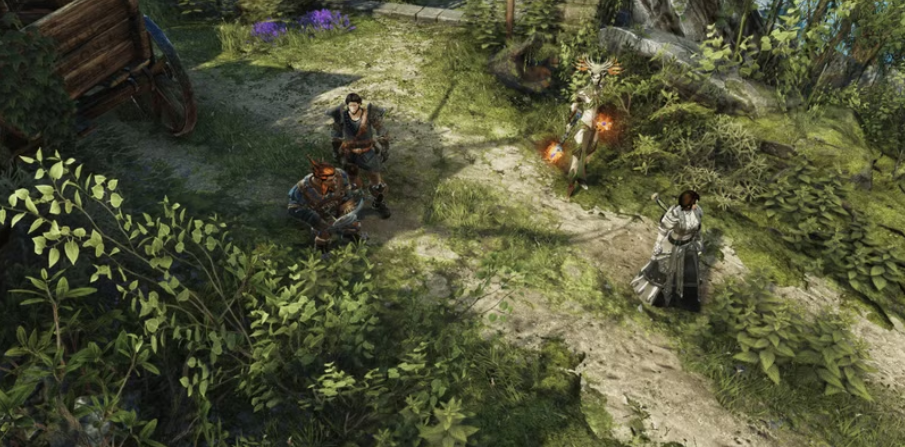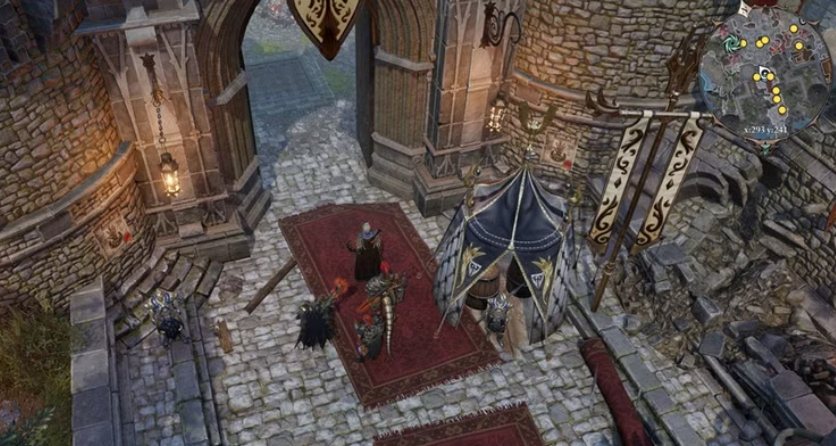How to Get Gold in Divinity: Original Sin 2: Top Strategies and Tips for Gold
Key Takeaways:
- Pickpocketing, bartering, and crafting are crucial methods for amassing wealth in Divinity: Original Sin 2.
- Investing in Civil Abilities like Thievery, Bartering, and Lucky Charm can greatly enhance your gold-earning potential.
- Managing your inventory and focusing on high-value items can make a significant difference in your gold reserves.
Divinity: Original Sin 2 is an RPG masterpiece that demands players to be strategic not only in combat but also in resource management. Gold is one of the most essential resources, giving you access to powerful gear, Skill Books, and other useful items that can make or break your journey. In this guide, we’ll explore the most effective ways to earn gold fast in Divinity: Original Sin 2, from sneaky pickpocketing tactics to savvy crafting and bartering strategies.
The Importance of Gold and Gear in Divinity: Original Sin 2
In Divinity: Original Sin 2, the power of your party is determined by two main factors: character levels and gear quality. Even the strongest characters can struggle in high-difficulty settings if they lack proper equipment, which is often acquired from vendors. Since gear upgrades are essential to keeping your party competitive, having enough gold to purchase new items is crucial.

The game does reward players with gold through quest completions and enemy loot drops, but it’s rarely enough to keep up with the constant need for better equipment. To build a robust gold reserve, you’ll need to go beyond regular gameplay rewards and employ some advanced strategies. Let’s dive into the top methods for building your fortune.
1. Pickpocketing and Thievery: The Quickest Path to Wealth
One of the fastest ways to make money in Divinity: Original Sin 2 is through pickpocketing. While this may not be the most honourable approach, it’s undeniably effective. Here’s how you can maximize your gains with a skilled thief in your party.
How to Pickpocket Successfully
To effectively steal from NPCs, you’ll need to dedicate at least one party member to the Thievery Civil Ability, which increases their ability to pick locks and steal. Consider investing in Sneaking as well to make it easier for your thief to approach targets without being detected. Ideally, you should have two characters focused on this role to maximize efficiency.
The trick to successful pickpocketing is distraction. Have one character engage the target NPC in conversation, allowing your thief to sneak around and steal items without being noticed. Be cautious of crowded areas, like marketplaces, where other NPCs may spot your thief. If you’re careful, you can even sell the stolen goods back to the original vendor!
For even smoother operations, use skills like Chameleon Cloak (from the Scoundrel skill tree) to turn invisible and Cloak and Dagger (Polymorph skill) to teleport directly to your target. These abilities allow you to bypass NPC vision cones and make pickpocketing much easier.
Maximizing Profits with Stolen Goods
Once you’ve successfully stolen items, sell them to vendors to convert your loot into gold. You can even repeatedly pickpocket the same vendors by leaving the area and returning later, though this requires a bit of finesse to avoid getting caught.
2. Invest in Bartering for Better Deals

While pickpocketing provides immediate gains, Bartering is an invaluable skill for managing long-term expenses and maximizing profits on every transaction.
Why Bartering Matters
Vendors in Divinity: Original Sin 2 are notorious for offering poor rates on both buying and selling items. By investing in the Bartering skill, you can increase the amount of gold you receive for sold items and decrease the price of items you purchase. This skill is especially effective when combined with a high Attitude score from the vendor, which you can increase by gifting them gold.
Humans, by default, have a +1 bonus to Bartering due to their racial Talent, Thrifty. If you’re using a Human character like Ifan Ben-Mezd or Lohse, they make excellent candidates for your primary bartering character. By Act 2, you can even find gear that grants additional Bartering points, allowing you to reach the maximum level of 10, which offers a 40% increase in sale prices and a 20% discount on purchases.
Building Relationships with Vendors
In addition to raising your Bartering skill, building a positive Attitude with vendors will further improve your buying and selling rates. To increase Attitude, simply gift vendors gold until they reach an Attitude of 100. This is especially helpful with merchants you visit frequently, as it amplifies the benefits of Bartering.
3. Crafting Valuable Items for Profit
If thievery isn’t your style, crafting offers a more honourable and still profitable alternative. By combining basic materials, you can create valuable items that often sell for significantly more than their component parts.
The Most Profitable Crafted Items
One of the best items to craft for profit is the Charming Arrow, which requires an Arrow Shaft and a Jar of Honey. Charming Arrows sell for around 145 gold each, and the components are relatively easy to find or make. Jars of Honey can be created by combining an Empty Jar with a Beehive.
Grenades are another high-profit item, as they require only two ingredients: an empty container and a filling. With a wide range of grenades available, you can craft items with values that range from a few hundred to over a thousand gold.
Why Crafting Pays Off
In addition to creating items for sale, crafting allows you to convert otherwise useless materials into valuable products, ensuring that nothing in your inventory goes to waste. This is especially helpful if you’re running low on inventory space and need to clear out items quickly.
4. Increase Your Lucky Charm for Free Loot

If you prefer passive income over active strategies, consider investing in the Lucky Charm Civil Ability. This skill increases your chances of finding valuable items in containers, making it ideal for players who prefer not to steal or craft extensively.
How Lucky Charm Works
Every time a character with high Lucky Charm opens a chest or lootable container, there’s a chance that the amount or quality of loot will increase significantly. The effect is visually signaled by a four-leaf clover and a special sound. A container that might have held 100 gold, for instance, could contain up to 500 gold or rare items when opened by a character with a high Lucky Charm.
Best Practices for Maximizing Lucky Charm
To make the most of Lucky Charm, designate one party member as your “looter” and focus all your points in Lucky Charm on them. This character should open every container to ensure the highest possible loot quality. Since Lucky Charm activates randomly, it’s a low-effort way to accumulate wealth without changing your playstyle.
5. Managing Inventory Space and Prioritizing High-Value Items
In any RPG, inventory management is key, and Divinity: Original Sin 2 is no exception. To maximize your gold income, prioritize looting and carrying items that are worth the most.
Items to Prioritize for Maximum Profit
Focus on picking up silverware, paintings, Skill Books, and high-value gear. These items tend to have a higher resale value, allowing you to clear out inventory space efficiently while maximizing gold per item sold.
Don’t Hoard – Sell Useless Gear
It’s tempting to hold onto items that might seem useful later, but in Divinity: Original Sin 2, inventory space is limited. Sell any equipment that your party won’t use and offload materials that are abundant. This ensures you have room for high-value loot, which translates to more gold in your pocket.
6. Tips for Sustainable Gold Farming Throughout the Game

Gold farming in Divinity: Original Sin 2 requires a multi-faceted approach. Here are some general tips to keep your gold reserves healthy:
- Balance Thievery and Honesty: If you’re comfortable with it, alternate between pickpocketing and crafting to keep your income steady.
- Explore Thoroughly: Check every chest, barrel, and crate, as even seemingly insignificant containers can contain valuable loot.
- Keep an Eye on Vendor Stock: Vendor inventories reset over time, so make a habit of checking back regularly for new gear or items you can resell.
FAQ: Common Questions About Earning Gold in Divinity: Original Sin 2
Q1: Is it worth investing heavily in Bartering? Yes, if you have a dedicated bartering character, it’s worth investing in Bartering. The discounts on purchases and increased selling prices can make a huge difference over time.
Q2: Does Lucky Charm affect all loot? Lucky Charm affects loot in containers but doesn’t apply to items dropped by enemies. It’s best used for treasure hunting and looting environmental containers.
Q3: Can I pickpocket the same NPC multiple times? Yes, but you’ll need to leave the area and wait for a while before attempting it again to avoid being caught.
Q4: Are there other ways to make money besides pickpocketing and crafting? Yes, completing quests, exploring, and maximizing inventory space for high-value items are all effective methods for earning gold.
Q5: Does gifting gold to vendors for Attitude boosts work with all vendors? Yes, increasing a vendor’s Attitude through gifts is effective with any vendor, improving your Bartering benefits with them.
